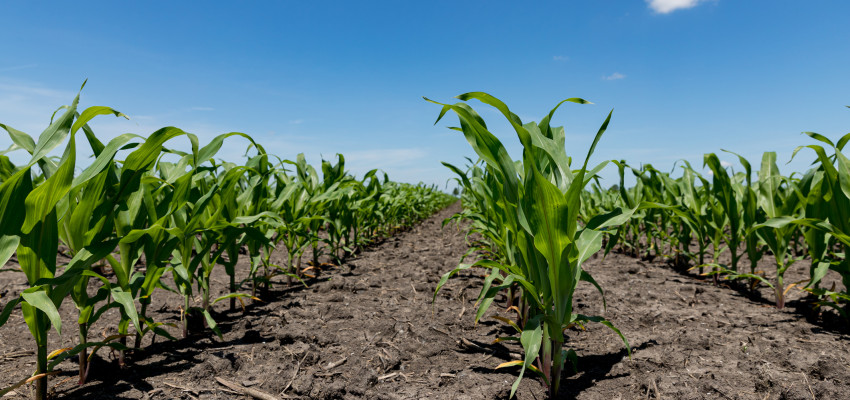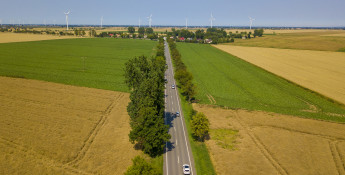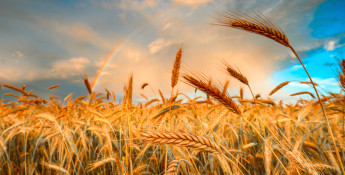By Hannah Becker on March 19, 2018
How does weather affect our food?

Planning an outside event can be stressful, and the main culprit is usually the weather. When a thunderstorm, wind or snow threatens to ruin your outdoor event, it can be frustrating.
This also happens in agriculture. And you’d be surprised to know that when weather events occur for farmers and ranchers, it can affect you too.
Agriculture and the environment maintain a very interconnected relationship – what one does greatly affects the other.
When growing factors like rainfall and temperatures don’t occur as expected, crops won’t grow optimally. Climate change-driven extreme weather events like drought, heat waves and tropical cyclones can have negative effects on our agriculture system. Severe storms can cause soil erosion, heat waves can kill crops, and temperature changes can increase the prevalence of plant disease, pests and even destructive weeds.
Conventional farming practices have been carefully designed in accordance with previously observed environmental factors, and when those things change, our food supply may be altered.
Aren’t warming temperatures good for growing food?
Climbing temps can be destructive to growing food.
The Environmental Protection Agency reported that most of the state of Kansas has experienced increasing average temperatures over the past few decades. This type of continually warming climate has the potential to disrupt the established ecosystem.
Kansas’ temperature changes have resulted in decreasing soil quality and destructive rainstorms – two weather changes that are not good for farming. High temperatures will also serve as a more conducive environment for crop diseases, pests and weeds. These temperature-induced environmental changes can have disastrous effects on growing food.
If you maintain a garden, you know when it’s really hot, you have to use even more water on your plants.
What about livestock?
It’s not just crop production that is starting to feel the effects of weather pattern changes; livestock (cattle, poultry, swine) are also negatively affected.
Destructive weather events like droughts and heat waves can decrease productivity both directly (heat stress) and indirectly (poor pasture quality). Other negative effects of increasing temperatures include things like decreased milk production, lower fertility rates and increased susceptibility to disease and parasites.
To give you an idea of just how detrimental a rise in temperature can be to our livestock industry, consider how much money one unexpected heat wave in 2011 cost in heat-related livestock loss.
Any guesses?
$10,000?
$100,000?
$1 million?
Try $1 billion. One heat wave initiated a $1 billion production loss. That’s a lot of food that doesn’t end up in the grocery store.
And that wasn’t even the worst heat-related event. In 2011, a drought in Texas cost the state more than $5 billion in agriculture losses, with the livestock sector suffering major losses.
But up isn’t the only way temperatures can go. Extremely low temperatures and spring blizzards are harmful to the food supply, too. Farmers and ranchers are diligent in taking care of livestock in all types of weather and that includes the bitter cold winters of Kansas.
How do weather changes affect consumers?
While a one-degree increase in average temperature may not have many direct effects on our lives beyond a higher electric bill during the summer months, our food supply is sensitive to any changes in the environment.
Agriculture innovations like irrigation systems and genetically modified plants help farmers produce more food while using fewer resources; however, weather remains a determining variable in how much can be produced.
When weather changes cause production loss, it has the potential to disrupt our food supply. And thanks to the economic principle of supply and demand, the less food we have, the more it costs and the more money you are spending to feed your family.
International trade programs, like the North American Free Trade Agreement (NAFTA), currently help to provide consumers some insulation against climbing food prices when weather events decrease food supply. Without trade options, consumers would feel more of the effects of weather change in the form of an increased food bill.
What can be done to protect our food supply?
Agriculture and the environment maintain an intimate relationship, where seemingly small changes – like a degree increase in average temperature – can have big effects. Farmers and ranchers work hard to protect this delicate balance through conservation and innovation.
To learn more about how farms right here in Kansas are going green to help combat the negative effects of climate change, click here.





